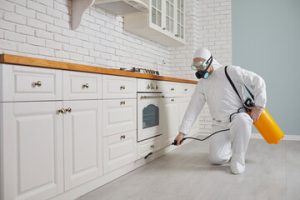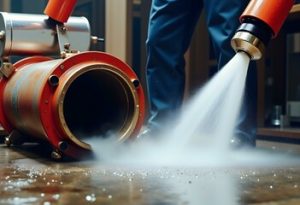The effectiveness of pest control methods relies on accurately identifying the nature of the infestation. This enables proper selection of treatment tools.

Pests invade homes in search of 3 things: food, water, and shelter. Eliminating these attractants prevents pests from gaining access to your property. Additionally, routine inspections and maintenance can help you detect a problem early on. Discover More About Us Here by reading the article below.
In order to practice effective pest management, it is important to know what the species of pest you are dealing with. Incorrect identification of pests will lead to ineffective treatments. Pest control experts can help you identify your pest problem and then recommend treatment options that are specific to that particular pest. This will ensure that your pest problems are dealt with successfully and are not returned.
Pests can cause a wide range of damage to plants, crops, structures and human property. They also carry with them the potential to spread disease. In many cases, pests have a significant negative impact on the profitability of businesses and the reputation of establishments. They can even threaten the livelihood of farmers and gardeners.
It is therefore vital to identify the pests present in a home or commercial premises. Failure to do so will lead to a repeat of the problem and can result in costly repairs and a loss of business.
Generally, pests can be identified from a good digital image, but it is often necessary to contact an expert for confirmation. Specialists can provide valuable information on pest behavior and biology that will guide your pest management tactics, including recommended treatment methods.
A number of factors can influence the appearance of a particular species of pest. These include the life cycle, feeding stage and adult form of the pest. The physical appearance of the pest can change dramatically between these stages. For example, a weed seedling will look very different from the mature plant and a fertilized egg will have a different appearance to an adult flies. These differences can be very difficult to distinguish by the untrained eye and should be clarified with the aid of a professional.
Some pests have very distinct, recognizable appearances and are readily identifiable by the average person. Other species may be a little less obvious, but can still be spotted by those with some experience or training in the field. It is important to be able to identify an insect down to the species level because pests within a family and even genera can exhibit very different characteristics. For example, they can have different behaviors, host plants and natural enemies, which will affect their interactions with humans and their ability to harm them or their property.
While identifying a pest to the species level is not always possible, every effort should be made to do so. This will enable the collection of all pertinent identification data and will allow an integrated pest management approach to be implemented. For instance, it is vital to identify the type of pest when buying pesticides as they can only be used in the correct way if the correct information is available. This information will be found on the product label and is required by law to be read and followed before every application.
Getting Your New Home Ready for Pest Control
Pest infestations are a major problem for homeowners and renters alike. They can destroy property, damage personal belongings, and even cause health risks. Whether you’re moving into a brand-new construction or a historic home, it’s essential to get your new space ready for pest control.
Pest control is a long-term strategy that involves regular inspections and treatments. It’s often viewed as an immediate response to a particular pest issue, but it’s important to think of it as part of your ongoing maintenance and prevention plan. In fact, a pest management approach can save you money in the long run by protecting your property and preventing costly repairs.
A pest control expert should always complete a thorough inspection of your new property before you move in. During this time, they will look for signs of existing infestations as well as conditions that may encourage future problems. This includes identifying and correcting food sources, moisture issues, or debris that can serve as shelter for pests. In addition, your pest control specialist can recommend environmental modifications to prevent future pest issues.
These include sealing cracks and openings around doors and windows, addressing leaky faucets, installing screens on vents, and keeping outdoor waste bins closed. These simple measures can significantly reduce the likelihood of pest infestations and help your new space stay pest-free.
Preventive pest control is also an excellent choice for apartments and other multi-family dwellings. Because these spaces have shared walls and floors, pests can easily move between units. Getting your apartment or condominium ready for pest control is essential to creating a safe, comfortable living environment. This begins with open communication between you and your landlord and continues with regular inspections and treatment programs.
Pests are unwanted organisms that disrupt human activities and the natural ecosystem. They include insects, fungi, bacteria, nematodes, weeds, and vertebrate animals (such as rodents) that interfere with human livelihoods or threaten the safety of people and pets. Infestations of pests can also degrade or destroy crops, food stores, homes, gardens, lawns, personal belongings, and wildlife habitats.
Discovering a pest infestation after you move into your new house is one of the most frustrating experiences you can have as a homeowner or renter. Whether it’s termites chewing through the foundation of your dream home or rodents stealing your belongings, these unwelcome surprises can wreak havoc and damage your quality of life. With proactive pest control strategies, however, you can ensure that your new home is free of unwanted guests before they start to settle in. To learn more about pest control, contact your local pest management professionals at Pest Share today! We’re here to provide you with the best pest protection in the area. We offer free touch-up inspections, a customer service guarantee, and competitive rates for all our services!
Preparing for Pest Control Treatment
Depending on the type of pests that are infesting your home, various preparation steps may be necessary to ensure a successful pest control treatment. These steps can help prevent contamination of food or other items in your home, and they will also minimize the risk of your family being exposed to any chemicals used during the treatment.
Before any treatment begins, it is important to clear away any clutter that may be in or around the area being treated. This will make it easier for the technicians to access the infested areas, and it will help to prevent pests from hiding under piles of paper or other items. Additionally, it is a good idea to store all food items in the refrigerator and to cover or stow away any cooking utensils that are normally stored on countertops.
Once the pest control expert has completed the initial inspection, they will be able to identify the extent of the infestation and develop a customized treatment plan. This will usually include both interior and exterior treatments that will vary depending on the pests infesting your property.
There are a variety of different methods that can be used to control pest populations, including natural, biological, chemical, physical, and cultural controls. Natural and biological controls use natural enemies to injure or consume target species to reduce their numbers. Chemical and physical controls are designed to directly impact pest populations or to limit the environmental factors that support them. Regulatory controls are generally used to manage pests that pose significant threats to human health or livelihoods, or that damage agricultural crops and natural resources.
Having routine pest control services will provide you with peace of mind, and it can also help to preserve the value of your home by preventing costly repairs and replacements. In addition, many pests carry harmful diseases and allergens that can affect the health of your family members, so keeping them under control is essential to protect your health.

